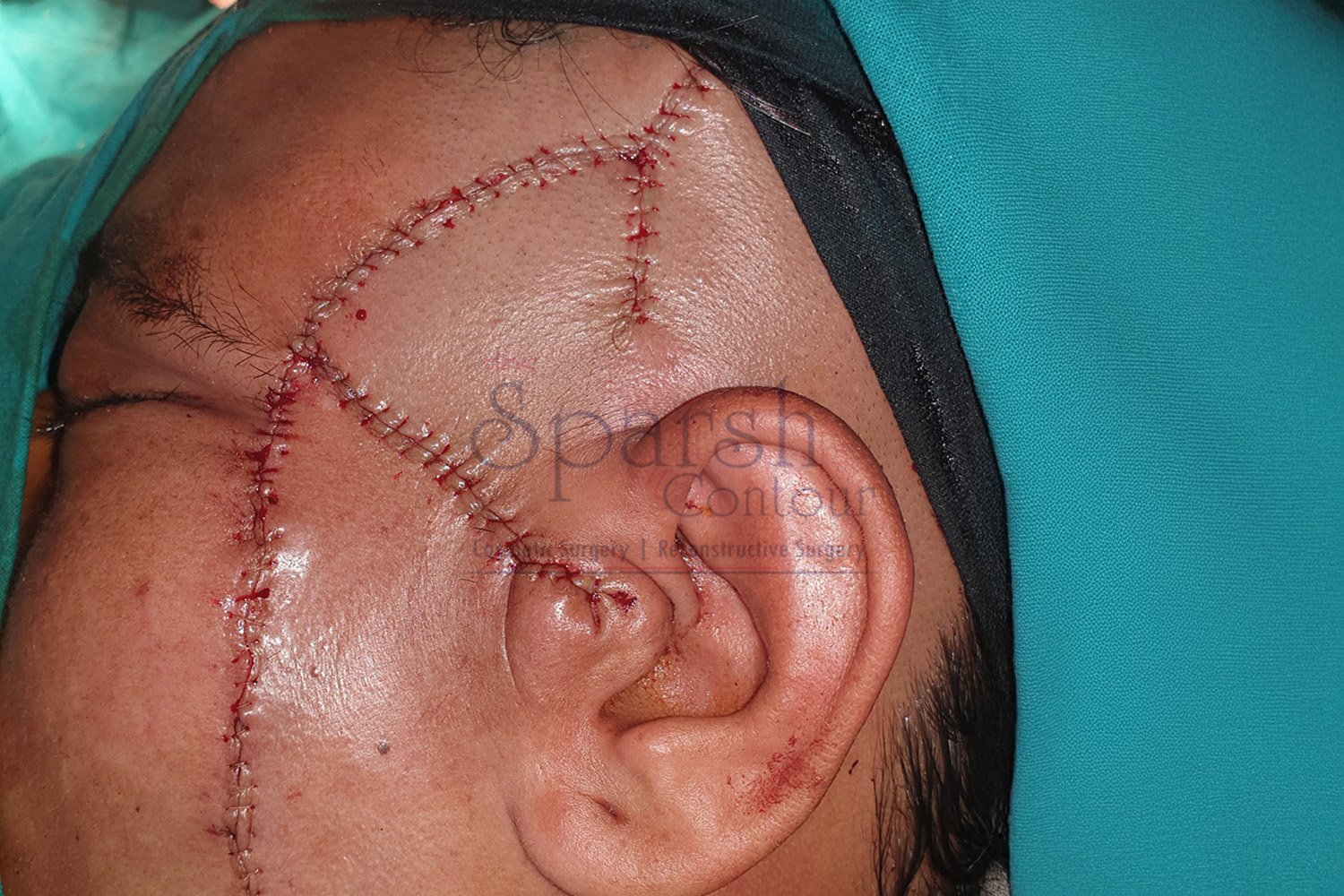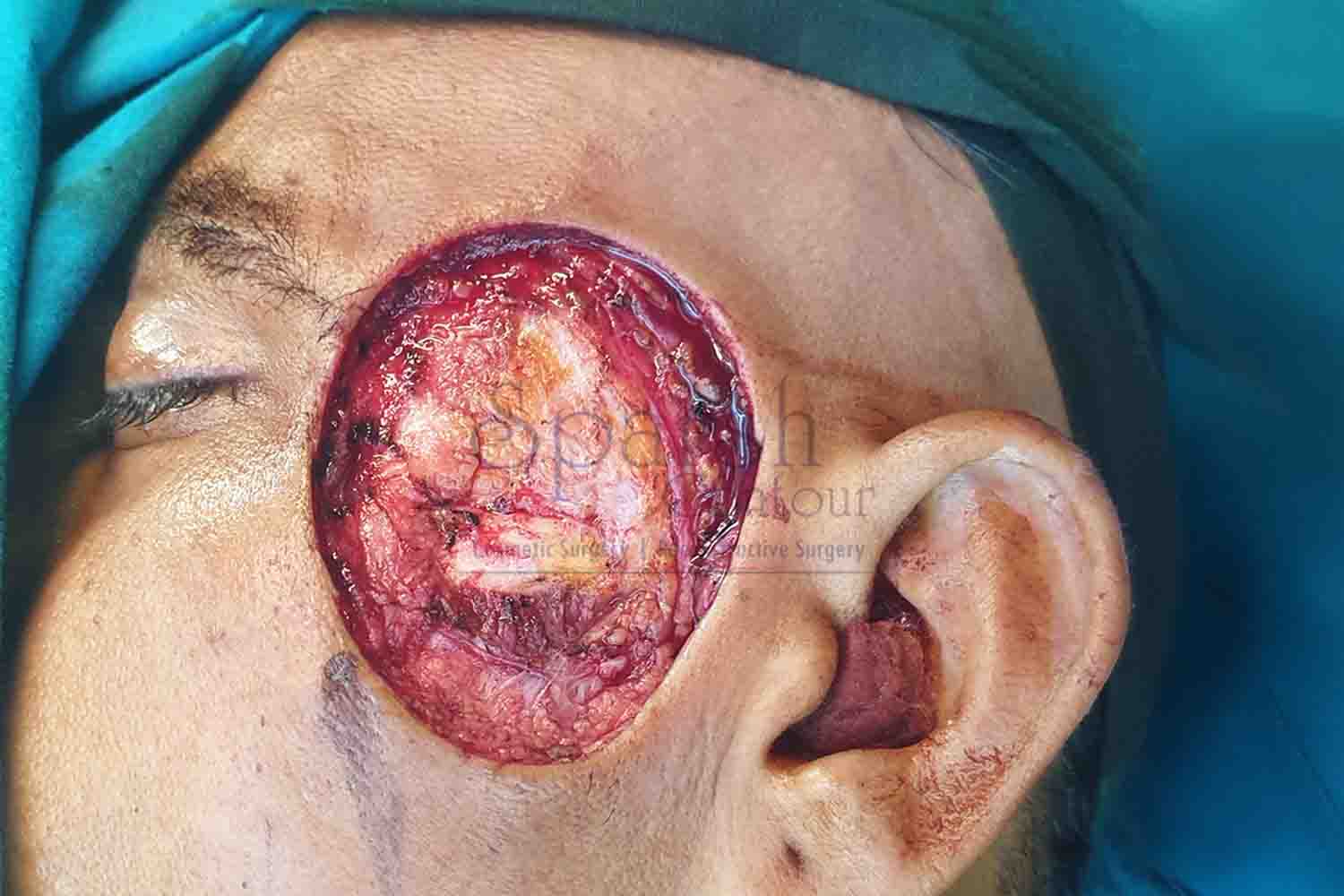Cancer Reconstruction
Head and Neck Reconstruction
Head and neck reconstruction in plastic surgery is a specialized procedure aimed at restoring the appearance and function of areas affected by trauma, cancer, or congenital conditions. This type of surgery is often required after the removal of tumors or after severe injuries, where large portions of tissue, bone, or skin need to be replaced or repaired.
The process involves a combination of techniques, including skin grafts, flaps (where tissue is moved from one part of the body to another), and even microvascular surgery, where tiny blood vessels are reconnected under a microscope to ensure the transferred tissue receives adequate blood supply. The goal is not only to repair physical damage but also to restore important functions like speaking, swallowing, and breathing, while achieving the best possible aesthetic outcome. For example, if a patient has a large portion of their jawbone removed due to cancer, the surgeon might use bone from the leg or another area to reconstruct the jaw. This intricate work helps patients regain a sense of normalcy in their appearance and daily activities. The complexity of head and neck reconstruction means it is usually performed by a team of specialists, including plastic surgeons, oncologists, and other healthcare professionals, to ensure the best results. Recovery from this surgery can take time, and follow-up treatments or additional procedures may be necessary to refine the reconstruction. However, with the expertise of Dr. Sushil Nahar and advancements in surgical techniques, many patients can achieve excellent functional and cosmetic outcomes, significantly enhancing their quality of life.
The process involves a combination of techniques, including skin grafts, flaps (where tissue is moved from one part of the body to another), and even microvascular surgery, where tiny blood vessels are reconnected under a microscope to ensure the transferred tissue receives adequate blood supply. The goal is not only to repair physical damage but also to restore important functions like speaking, swallowing, and breathing, while achieving the best possible aesthetic outcome. For example, if a patient has a large portion of their jawbone removed due to cancer, the surgeon might use bone from the leg or another area to reconstruct the jaw. This intricate work helps patients regain a sense of normalcy in their appearance and daily activities. The complexity of head and neck reconstruction means it is usually performed by a team of specialists, including plastic surgeons, oncologists, and other healthcare professionals, to ensure the best results. Recovery from this surgery can take time, and follow-up treatments or additional procedures may be necessary to refine the reconstruction. However, with the expertise of Dr. Sushil Nahar and advancements in surgical techniques, many patients can achieve excellent functional and cosmetic outcomes, significantly enhancing their quality of life.
 After
After  Before
Before Drag
Cancer Reconstruction
Who needs head and neck reconstruction?
- Patients who have undergone surgery for cancer (such as oral or throat cancer) may require head and neck reconstruction to restore normal function and appearance.
- Significant facial or neck trauma can necessitate head and neck reconstruction to repair damage and improve functionality.
- Congenital deformities may also require head and neck reconstruction to achieve a normal appearance and proper function.
our expert answers
frequently asked questions
How long does recovery take after head and neck reconstruction?
Recovery time varies based on the complexity of the surgery and individual patient factors. Generally, it involves several weeks to months, with follow-up visits to monitor progress and ensure proper healing.
Will head and neck reconstruction improve my appearance?
Yes, one of the main goals of head and neck reconstruction is to enhance cosmetic outcomes. Skilled surgeons aim to restore a natural look, minimize scarring, and improve the overall appearance of the affected areas.
What are the potential risks and complications?
As with any surgery, risks may include infection, bleeding, scarring, and issues related to anesthesia. Specific risks will depend on the extent of the surgery and individual patient factors.
How can I prepare for head and neck reconstruction surgery?
Preparation involves a thorough consultation with your surgeon, discussing your medical history, and possibly undergoing pre-operative tests. Your surgeon will provide specific instructions on how to prepare for the surgery.
What kind of follow-up care is needed after the surgery?
Follow-up care may include regular visits to monitor healing, manage any potential complications, and assess the results of the surgery. Your surgeon will provide a detailed plan for post-operative care and recovery.
APPOINTMENT
